Is detection of intraperitoneal exfoliated tumor cells after surgical resection of rectal cancer a prognostic factor of survival?
- PMID: 28592327
- PMCID: PMC5461707
- DOI: 10.1186/s12885-017-3365-7
Is detection of intraperitoneal exfoliated tumor cells after surgical resection of rectal cancer a prognostic factor of survival?
Abstract
Background: The prognostic significance of free cancer cells detected in peritoneal fluid at the time of rectal surgery remains unclear. A substantial number of patients will develop metastatic disease even with successful local treatment. This prospective non-randomized study investigated the prognostic value of intraperitoneal free cancer cells harvested in peritoneal lavage after surgery for rectal cancer. Mutational hotspots in mitochondrial DNA were examined as potential molecular signatures to detect circulating intraperitoneal free cancer cells when present in primary tumor and in lavage.
Methods: Point mutations in mitochondrial DNA amplifications were determined in primary tumors and corresponding exfoliated intraperitoneal free cancer cells in lavage from 191 patients with locally advanced rectal cancer scheduled for radical treatment. Mitochondrial DNA target sequences were amplified by polymerase chain reaction and base substitutions were detected by denaturant, cycling temperature capillary electrophoresis. Detection of intraperitoneal free cancer cells was correlated to survival.
Results: Of 191patients analyzed, 138 (72%) were identified with somatic mitochondrial point mutations in rectal cancer tumors. From this fraction, 45 patients (33%) had positive lavage fluid with corresponding somatic mtDNA point mutations in lavage representing circulating intraperitoneal free cancer cells. There was no significant survival difference between patients identified with or without somatic mitochondrial DNA point mutations in the corresponding lavage.
Conclusion: Somatic mitochondrial DNA point mutations identified in primary rectal tumors enable detection of circulating intraperitoneal free cancer cells in lavage fluid. Intraperitoneal free cancer cells harvested from lavage immediately after surgery for rectal cancer does not represent an independent prognostic factor on survival.
Keywords: Prognostic factor; Rectal cancer; Survival; mtDNA mutations.
Figures
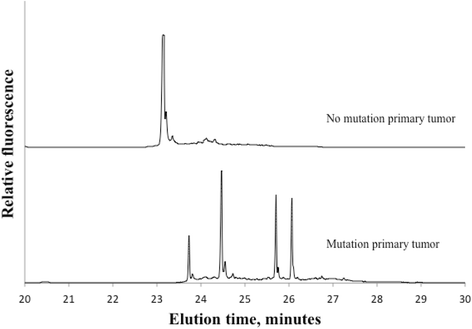
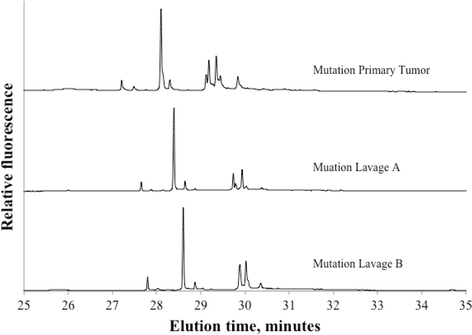
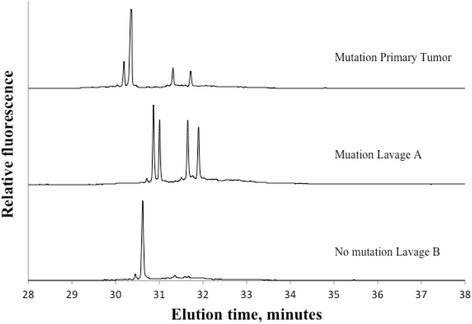
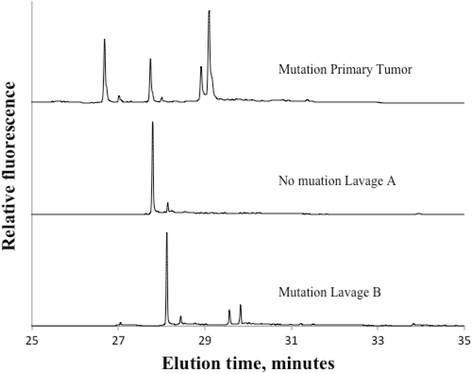
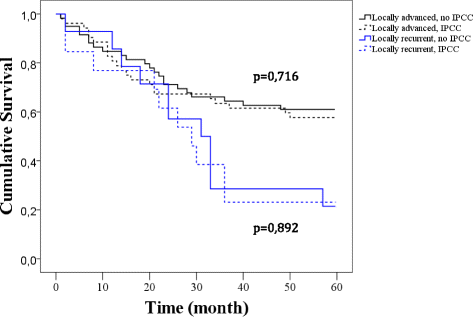

Similar articles
-
Long-term prognostic value of conventional peritoneal lavage cytology in patients undergoing curative colorectal cancer resection.Dis Colon Rectum. 2009 Jul;52(7):1312-20. doi: 10.1007/DCR.0b013e3181a745a4. Dis Colon Rectum. 2009. PMID: 19571710
-
Detection of Free Cancer Cells in Pelvic Lavage with Double Immunocytochemistry at Rectal Cancer Surgery.Anticancer Res. 2017 Apr;37(4):1563-1568. doi: 10.21873/anticanres.11485. Anticancer Res. 2017. PMID: 28373415
-
Disseminated single tumor cells as detected by real-time quantitative polymerase chain reaction represent a prognostic factor in patients undergoing surgery for colorectal cancer.Ann Surg. 2002 Dec;236(6):768-75; discussion 775-6. doi: 10.1097/00000658-200212000-00009. Ann Surg. 2002. PMID: 12454515 Free PMC article.
-
Intra-operative peritoneal lavage for colorectal cancer.World J Gastroenterol. 2014 Feb 28;20(8):1935-9. doi: 10.3748/wjg.v20.i8.1935. World J Gastroenterol. 2014. PMID: 24616569 Free PMC article. Review.
-
Genetic detection of free cancer cells in the peritoneal cavity of the patient with gastric cancer: present status and future perspectives.Gastric Cancer. 2007;10(4):197-204. doi: 10.1007/s10120-007-0436-5. Epub 2007 Dec 25. Gastric Cancer. 2007. PMID: 18095074 Review.
Cited by
-
Somatic Mitochondrial DNA Point Mutations Used as Biomarkers to Demonstrate Genomic Heterogeneity in Primary Prostate Cancer.Prostate Cancer. 2020 Aug 28;2020:7673684. doi: 10.1155/2020/7673684. eCollection 2020. Prostate Cancer. 2020. PMID: 32908706 Free PMC article.
-
Applications of Probiotic-Based Multi-Components to Human, Animal and Ecosystem Health: Concepts, Methodologies, and Action Mechanisms.Microorganisms. 2022 Aug 24;10(9):1700. doi: 10.3390/microorganisms10091700. Microorganisms. 2022. PMID: 36144301 Free PMC article. Review.
References
-
- Cancer in Norway 2014 - Cancer incidence, mortality, survival and prevalence in Norway. Oslo:Cancer. https://www.kreftregisteret.no/globalassets/cancer-in-norway/2014/cin_20.... Registry of Norway, 2015.
MeSH terms
LinkOut - more resources
Full Text Sources
Other Literature Sources

